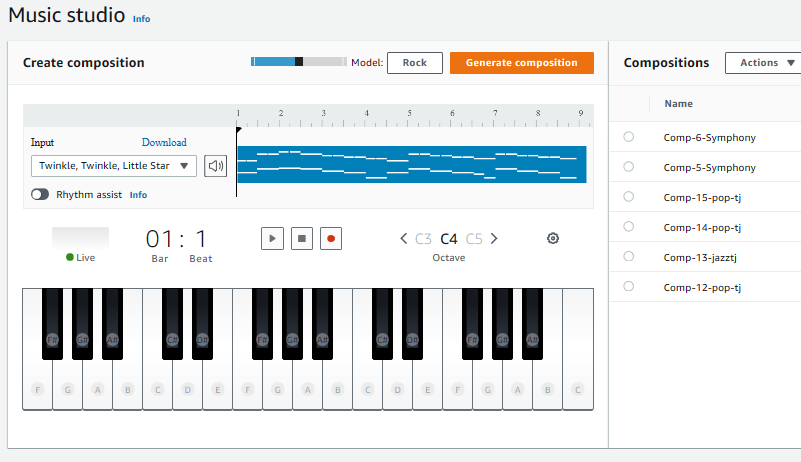The FCC has developed and approved a $200 million program to fund telehealth services and devices for medical providers, just a week or so after the funding was announced. Hospitals and other health centers will be able to apply for up to $1 million to cover the cost of new devices, services and personnel.
The unprecedented $2 trillion CARES Act includes heavy spending on all kinds of things, from direct payments to out-of-work citizens to bailouts for airlines and other big businesses. Among the many, many funding items was a $200 million earmarked for the FCC with which it was instructed to improve and subsidize telehealth services around the country.
Telehealth comprises many services, from something as simple as making appointments online, to using internet-connected monitoring devices, to conducting an entire primary care visit via video chat. The latter is an incredibly important option for doctors and nurses who not only need to avoid direct contact with potentially sick patients if possible, but also need every spare minute they can muster.
&The toll this pandemic is taking on our healthcare system is clear. To the extent that connectivity solutions can provide immediate assistance with remote care and monitoring, we should use them. There is already evidence across the country that this works,& said Commissioner Jessica Rosenworcel in a statement accompanying the order.
Unfortunately telehealth systems are by no means simple or easy to implement, given that they must not only meet highly stringent privacy requirements like HIPAA, but also be effortless to use for people who might not use video chat for any other purpose. Setting aside space, equipment, budget, and so on for telehealth operations is difficult and time-consuming in the best of times, let alone when care centers are overwhelmed and understaffed. Even hospitals that provide some telehealth services are likely to find demand far outstripping supply right now.
The $200 million FCC program is aimed at mitigating this as simply and quickly as possible. &I&m hard-pressed these days to think of any better use case for the agencymission of advancing connectivity than telemedicine,& said FCC Chairman Ajit Pai in a statement.
As the order, passed unanimously today, describes it:
The support provided through the COVID-19 Telehealth Program will help eligible health care providers purchase telecommunications services, information services, and devices necessary to provide critical connected care services, whether for treatment of coronavirus or other health conditions during the coronavirus pandemic.
&Eligible& in this case means on the following list of types of organizations or combinations thereof:
- Medical schools and teaching hospitals
- Community health centers and migrant care centers
- Local health agencies and departments
- Community mental health centers
- Not-for-profit hospitals
- Rural health clinics
- Skilled nursing facilities (e.g. long term care facilities)
Any given entity may be awarded up to $1 million in funding depending on its need and reach. Priority is being given to areas especially hard-hit by the virus and chronically underfunded places like clinics in poor neighborhoods that subsist on Medicare payments and the like.
There are a few restrictions as to what the funds can be used for — for instance, only internet-connected monitoring devices are covered, not ordinary &offline& ones that the patient must relay the results from via other services. But the general idea is to stay flexible and let the recipients of this money decide what to do with it.
Rosenworcel tempered her hopeful remarks with some practical feedback for the order, which was by necessity somewhat rushed.
&This is a well-intended effort, but it lacks clear performance metrics,& she said. &That means it will disburse funds without a system for measuring outcomes or a plan for what comes after this pilot program reaches its end. Moreover, it does not focus on a specific problem in healthcare.&
Better, of course, that the money is available now and accounted for later, since we are presently in the throes of the crisis.
A second $100 million program was also authorized, by which money taken from the FCCmain budget takes a longer-term approach to engendering telehealth over the next two years. That program differs in some key ways (not covering connected devices, for one) and will play out in slower fashion but provide ongoing support.
The FCC has several ongoing efforts to &Keep Americans Connected,& as it puts it, from institutional programs like this one to extracting promises from broadband providers not to fine people for data overages or late payments. You can find a list of its work here.

- Details
- Category: Technology Today
Read more: FCC enacts $200M telehealth initiative to ease COVID-19 burden on hospitals
Write comment (97 Comments)We have airplanes and drones in our airspace and satellites in space, but what about the space in between: the stratosphere?
There are platforms, such as blimps, balloons and high-altitude long endurance (HALE) fixed-wing platforms that can duplicate functions now performed by drones or satellites in a more technically and commercially viable manner.
Commercial drones operate in our airspace below 400 feet. Commercial aircraft fly between 9-12km (30,000-39,000 feet). Satellites operate in low Earth orbit (LEO, 500-1200km), mid Earth orbit (MEO, 2000-36,000km) and geostationary Earth orbit (GEO, 36,000km).
But what about the vast space in between our air space and LEO? The approximately 488km of space known as the stratosphere, is, at present, largely uninhabited and underutilized.
The problem
Imagine if a platform wants to loiter over a single point on the Earth for an extended period of time, either to maintain situational awareness and consistent surveillance over an area of interest or maintain communications. For example, after a natural disaster, it would be invaluable and life saving to have eyes, ears and a voice in the sky monitoring and helping the afflicted. Or what if the platform were able to monitor a natural disaster before it made landfall to collect better data on the stormsize, location and path?
Other reasons why it might be advantageous to have persistent real-time video from the sky is surveillance of vast maritime regions and borders, identification of objects of interest and monitoring events, including storms, fires and environmental disasters, on behalf of first responders and enforcement agencies.
Another example could be global internet connectivity. If platforms mesh together and talk to one another, they could connect the world below in a much more effective and efficient manner than ground-based fiber optic cables. It could monitor our oceans or protect vulnerable people from exploitation. And the potential military, intelligence and governmental applications are obvious and substantial.
In short, the applications are abundant and the potential market for this type of platform massive.
Possible existing solutions
Right now, the prevalent existing airborne platforms are drones and planes, and the prevalent existing space-based platforms are satellites. Each platform has various benefits, but none are optimized for many of the missions described above and, thus, do not necessarily accomplish those missions in the most efficient and effective manner.
Quadcopter drone
|
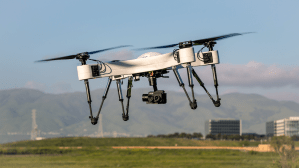 Image Credits: Impossible Aerospace |
Uncrewed plane
|
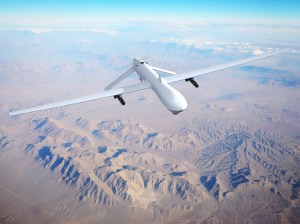 Image Credits: alxpin (opens in a new window) /Getty Images |
Constellation of LEO satellites
|
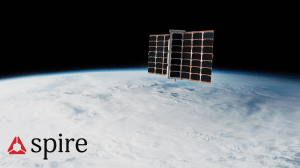 Image Credits: Spire Global |
GEO satellite
|
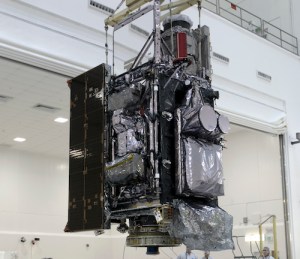 Image Credits: NASA/Leif Heimbold (opens in a new window) / Wikimedia Commons (opens in a new window) under a CC BY-SA 2.0 (opens in a new window) license. |
The solutions above are optimized for other types of critical missions. For example, drones are great for monitoring crops or inspecting infrastructure (as Drone Deploy software enables) or delivering emergency medical supplies (which Zipline and Google Wing are doing). Remotely-operated planes like General Atomics MQ-1 Predator have offensive military applications.
Constellations of LEO satellites in space, like Spire Global, can provide maritime, aviation and weather monitoring and prediction, or take photos of the world, as Planet Labs does. Lastly, GEO satellites can also be used for monitoring weather, communication and surveillance, but at a high level, not localized.
Possible future solutions
There are a handful of companies working on solutions specifically optimized for the mission of loitering over a single point. These solutions include balloons, blimps and HALE (high-altitude long endurance) platforms in the stratosphere.
Balloons
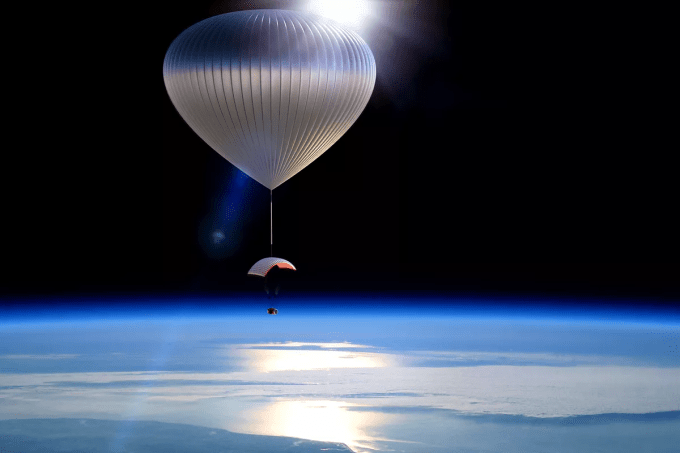
Image Credits: WorldView
Companies like Loon, WorldViewand WindBorne use air currents in the stratosphere to loiter over a single point. Their platforms have no propulsion on board and the structure consists of two balloons, a lift and a ballast balloon. The lift balloon contains either helium or hydrogen and is sealed with special UV-coated material. They use a compressor to add or remove air from the ballast balloon so that it becomes lighter or heavier to make the balloon go up or down depending on wind speed and direction and which air current they would like to ride.
- Pro: You cannot see these balloons from the ground with the naked eye or with most types of current ground-based tracking systems. They are fairly cheap, can be launched easily and can loiter over a single area for days or even months at a time.
- Con: Without propulsion, balloons are difficult to navigate through intense stratospheric winds, so it might be hard to precisely navigate and keep the balloons over the specific area of interest. The balloons are not recoverable when the flight terminates, although when the balloon bursts and returns to Earth you might be able to recover the payload.
Blimps

Image Credits: MR1805 (opens in a new window) / Getty Images
- Pro: They are fairly large so they can carry heavier payloads and provide more power to the payload. You can re-land the entire platform to either fix or recover the payload, and launch it multiple times.
- Con: They can be seen from the ground because they are so large, which makes them vulnerable to being shot down. Companies like Sceye and Altaeros are using the Goodyear Blimp with some tech upgrades. Their airships either have propulsion or are tied to the ground below, so they can better control where they are going, and they have upgraded UV and ozone-resistant skin.
HALE fixed-wing
Companies like Zenith and Skydweller are working on high-altitude long endurance (HALE) fixed-wing platforms. These high-aspect-ratio aircraft (which means long but slender wings) are powered by sunlight hitting the solar panels on the wings. The power that is generated can either power the plane and payload or be stored in the batteries. Therefore, if enough power is generated and stored during the day to last throughout the night, the plane can fly indefinitely.
- Pro: They can be precisely controlled by a pilot.
- Con: They have limited power for the payload, as most of the power generated is needed to power the aircraft.
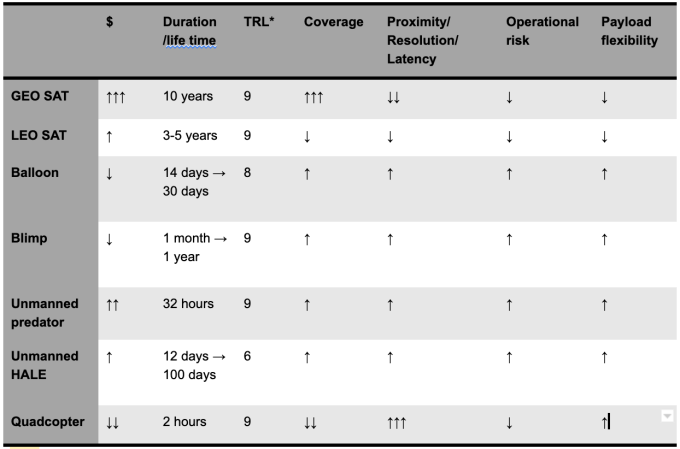
*TRL: technology readiness level
For all of these platforms, there will be additional challenges in the areas of manufacturing and mission management. The platforms need to be manufactured and launched cheaply, quickly and reliably. This takes time and money. Additionally, there are issues relating to who will monitor the platforms once they are in the stratosphere — the company that built the platform or the customers whose payload the platform is holding?
Another issue that platforms that operate in the stratosphere will face relates to who regulates the stratosphere. Obviously, putting and operating platforms in the stratosphere raises a number of regulatory and legal questions that will have to be resolved.
I believe there is enough room in this market (and certainly in the stratosphere) for all of these platforms to be successful. They complement existing platforms such as drones and satellites and, for certain critical missions, can be more effective and efficient than their counterparts that operate in the airspace or in LEO/GEO.
- Details
- Category: Technology Today
Read more: The space in between: The stratosphere
Write comment (97 Comments)